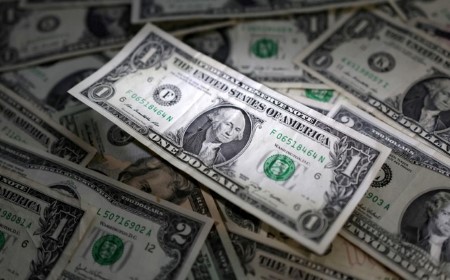




Philippines Trade Update: Trade trajectories trend along
 DOWNLOAD
DOWNLOAD

Policy Rate Updates: Double cut finale
 DOWNLOAD
DOWNLOAD

Monthly Economic Update: One for the road
 DOWNLOAD
DOWNLOAD


Bond market’s newfound economic optimism may be shortsighted

Aug 11 – In recent weeks, US bond markets have bought into the prospect of a “soft landing,” prompting some investors to question whether they are ignoring the risk that companies will run into trouble in a higher-for-longer interest rate environment.
Corporate credit spreads, which indicate the premium investors require to hold companies’ bonds over safer government paper, have tightened in a sign that investors have come to believe the US Federal Reserve will manage to bring down inflation without causing too much economic pain.
Some analysts and bankers said that optimism might be ill-advised. Curbing inflationary pressures could take time and lead the Fed to keep interest rates high for longer than investors believe. That, in turn, could still cause a recession and hurt corporate balance sheets.
“People might be capitulating on the recession call too soon,” said Cindy Beaulieu, managing director and portfolio manager at Conning, which manages USD 205 billion.
Edward Marrinan, macro credit strategy desk analyst at SMBC Nikko Securities America, added: “Credit risk at this point is mispriced.”
Fixed income markets are expecting a perfect landing, but they may instead be in for more turbulence ahead. Investors got a taste of what that can mean on Aug. 7 when Moody’s downgraded several banks, citing the possibility of a mild recession and commercial real estate risks. The move prompted a sell-off in equities and a slight widening in corporate credit spreads.
But the lesson was short-lived. Investors recovered from that dent to sentiment after labor and inflation data on Thursday came in line with expectations, spurring hopes the Fed will not hike rates again in September.
The average investment-grade bond spreads as of Thursday were just a few basis points wider than the tightest levels touched this year in July and 16 basis points tighter from January. Junk-bond spreads are 98 basis points inside January levels.
Daniel Krieter, credit strategist at BMO Capital Markets, said the reason for the sanguine view in credit markets was a sense that corporate fundamentals look better so far this year than expected and bets to the contrary may be too expensive.
“It is far more expensive to keep betting against what you can see for now rather than relying on what you cannot,” Krieter said.
HIGH YIELDS
SMBC’s Marrinan said the safer trade for investors would be to reduce risk and buy higher-quality bonds of companies that have financial resilience in a difficult economic environment.
But that’s a hard call to make with corporate bonds offering high yields as a consequence of the sharp increases in US interest rates, and corporate fundamentals turning out to be better than expected after the latest quarterly earnings.
The rate of defaults for junk bonds, the riskiest form of US debt, in the broad US high-yield index, stood at around 1% this year, much lower than expectations of 5% to 8% at the beginning of the year, said Manuel Hayes, senior portfolio manager at London-based asset manager Insight Investment.
“Default rates even in the worst-case scenario of a prolonged high rate environment are now expected to tick up to about 2-3% with a lot of this risk priced in already,” Hayes said.
Refinancing needs are also expected to pick up in two to three years, he said, reducing the risk of a near-term wave of debt defaults.
The spreads on junk bonds rated CCC or those prone to bankruptcies or payment defaults have tightened 267 basis points this year, more than the 98 basis points tightening in spreads of better quality BB-rated junk bonds, according to Informa Global Markets data.
“With market consensus now expecting a soft landing, the credit markets are arguably underpricing default risk,” BMO’s Krieter said. “It begs the question whether credit should be priced to perfection for a soft landing as it is currently.”
(Reporting by Shankar Ramakrishnan and Davide Barbuscia; Editing by Paritosh Bansal and Jonathan Oatis)
This article originally appeared on reuters.com





 By Reuters
By Reuters